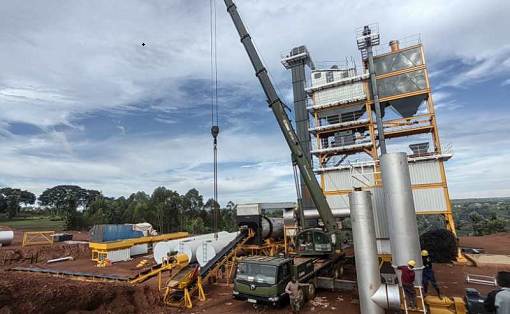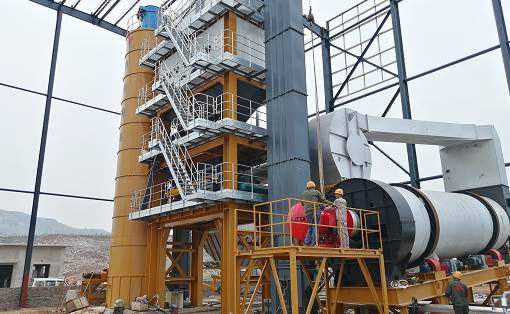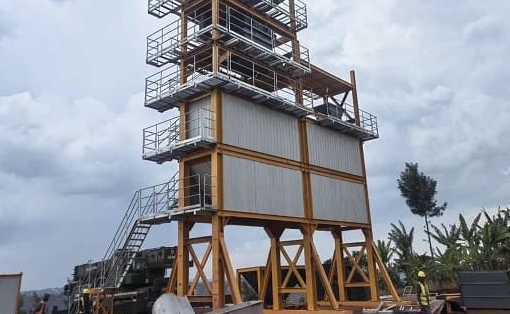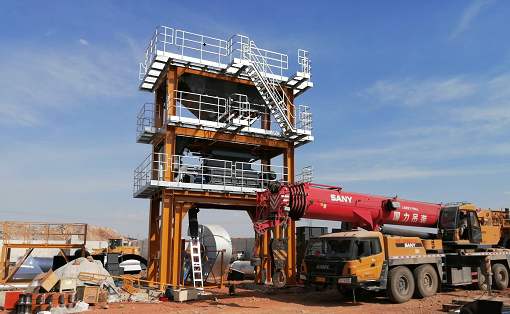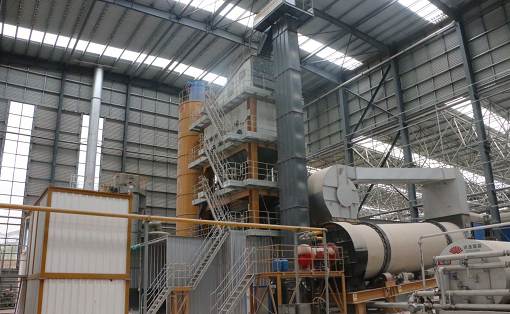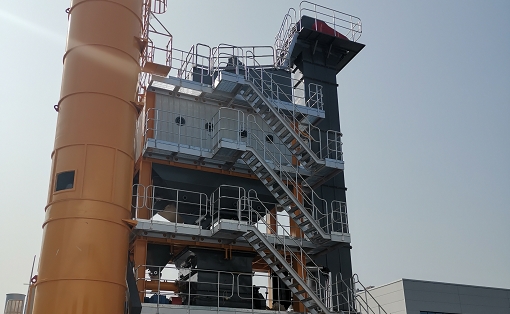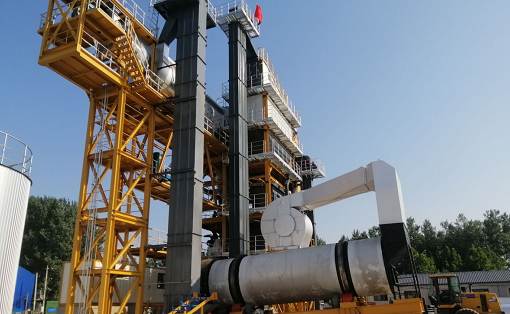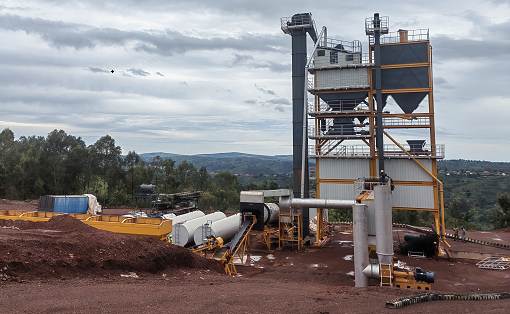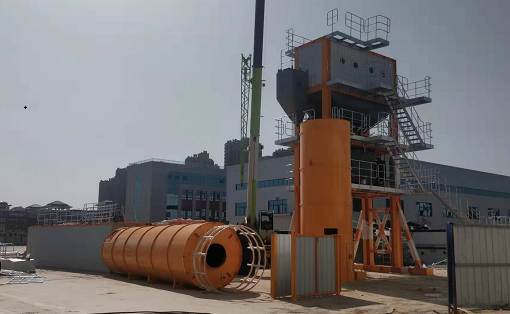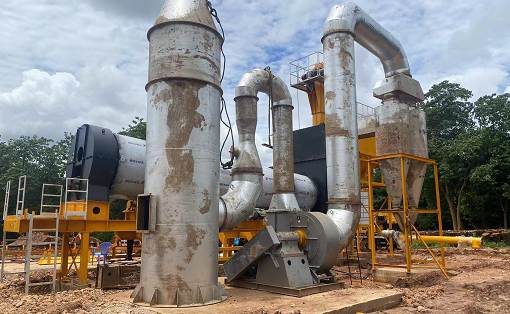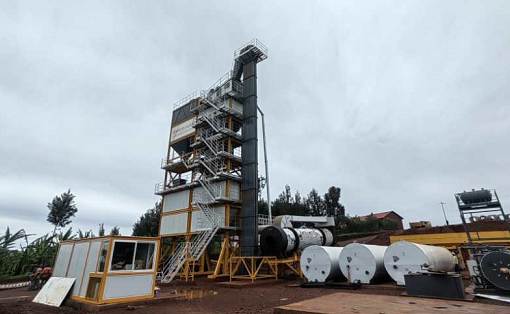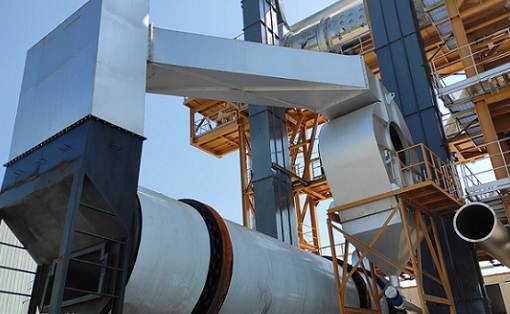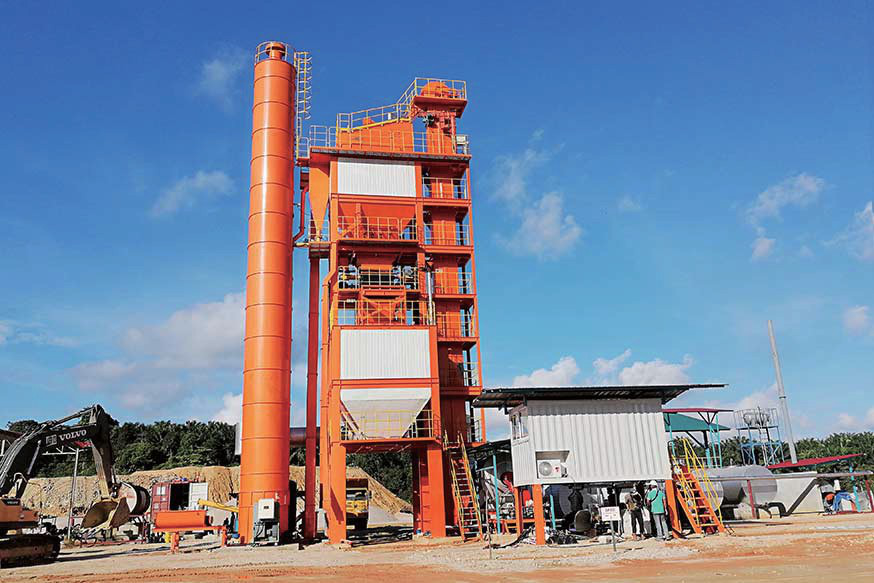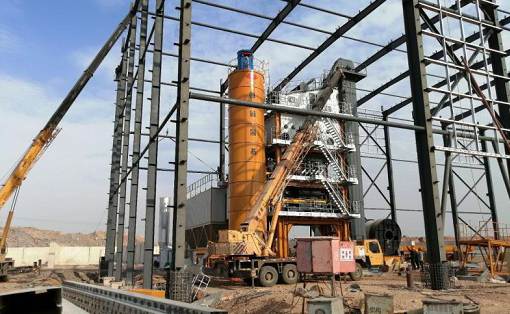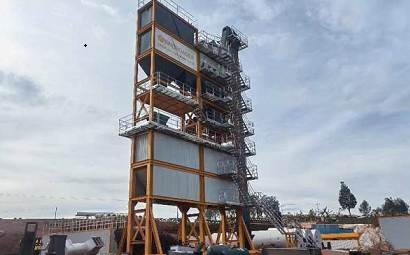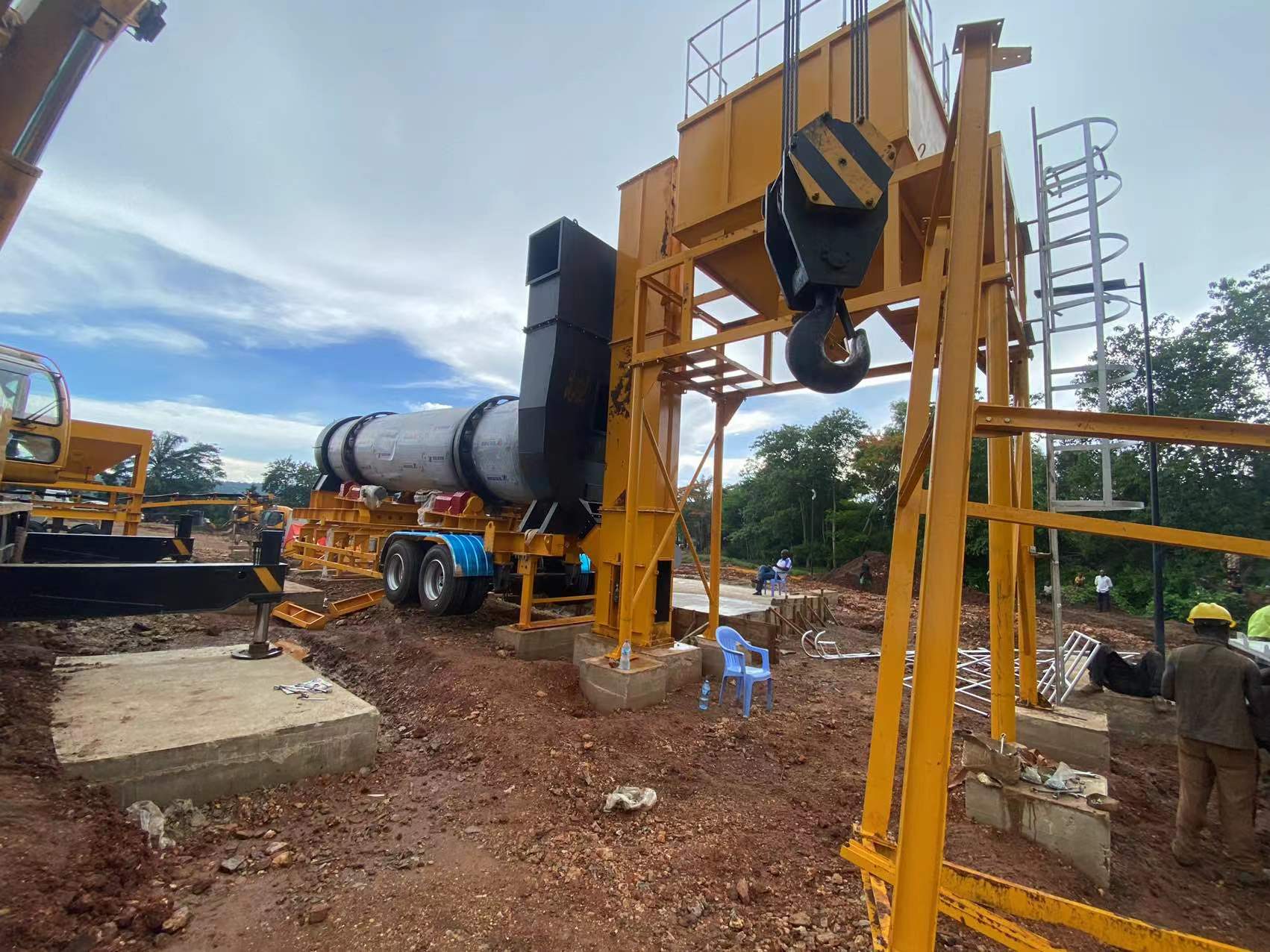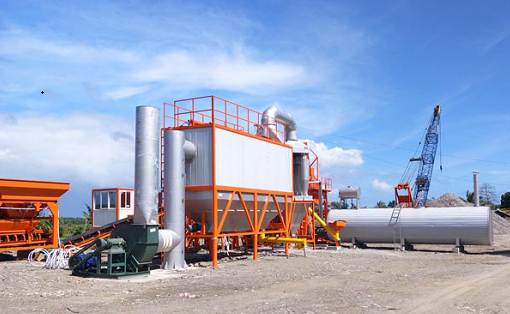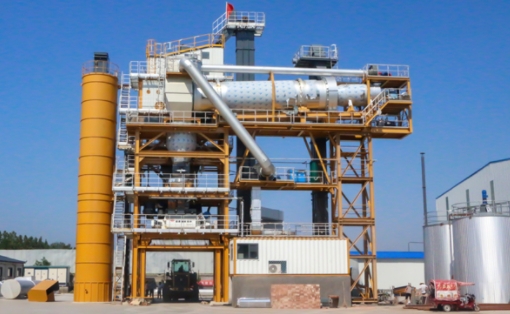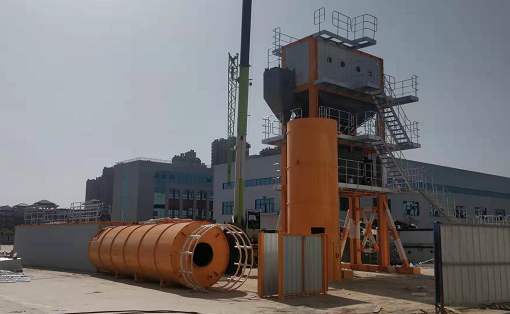Large asphalt mixing plant site installation planning, commissioning and acceptance
Asphalt mixing stations play an important role in road construction. This article starts from the site selection, commissioning, and acceptance of the asphalt mixing plant, and elaborates on comprehensive and reasonable planning to avoid disturbing the normal construction order.
Asphalt mixing stations play an important role in road construction. This article starts from the site selection, commissioning, and acceptance of the asphalt mixing plant, and elaborates on comprehensive and reasonable planning to avoid disturbing the normal construction order.
1 Site planning of asphalt mixing station
1.1 Site selection requirements
Large-scale asphalt mixing plants occupy a large area, have many types of equipment, must have a certain storage capacity for stone stacking, and are divided into living areas and production areas.
1.2 Principles of site selection
1) When selecting a site, it should be close to the roadbed of this tender section and located near the midpoint of this tender section.
2) Water and electricity sources should be convenient.
3) Adopt convenient transportation of raw materials and finished materials in and out of the mixing station.
4) Consider external factors and try to avoid installing in places with many surrounding residents.
5) It can supply asphalt mixture to several connected pavements at the same time.
1.3 Natural conditions for site selection
1) The environment of the site should be dry, the terrain should be high and the groundwater level should be low. Avoid installing near rivers.
2) When excavating and installing the foundation, you should understand the geological conditions of the site. If the geological conditions are good, such as hard foundations such as sand and gravel, the cost of installing the equipment can be reduced and equipment deformation caused by settlement can be avoided; if the geological conditions are loess foundations, the foundation can be expanded according to the actual situation to improve the foundation’s strength. method.
1.4 Site planning and layout
1) Site planning mainly refers to three major floor plans, including: overall floor plan, installation foundation plan, and low-voltage power system plan.
2) First, the production area and office area should be planned. The polyurethane product production area and living area should all be enclosed with walls. Main buildings and structures in the living area: staff dormitories, canteens, restaurants, and conference rooms. Main buildings and structures in the production area: on-site offices, laboratories, guard rooms, stockyards, power distribution rooms, gates, etc.
1.5 Basic prefabrication
There are many component assemblies of asphalt mixing stations, mainly including mixing station main engine, asphalt storage facilities, finished product silos, thermal oil furnaces, dust removal systems, power distribution rooms, cable trenches, etc. When prefabricating the foundation, the coordinate method is used to determine the relative position of each embedded part using a theodolite, and the elevation of each foundation is determined with a level. The elevation error does not exceed 3mm. And maintain the concrete foundation in a timely manner.
1.6 Preparations before installation
1) Before all auxiliary facilities and complete sets of mixing station equipment are transported to the site, the boiler regulations determine the mutual positions of the assemblies based on the installation foundation map, and it is particularly important to ensure that they are lifted into place at one time during installation. Otherwise, Repeated transport of equipment by crane on site will result in an additional increase in shift costs.
2) The installation site should meet the requirements and achieve “three connections and one level”.
3) Organize an experienced installation team to enter the construction site and organize and purchase installation equipment.
4) Installation sequence: Mixing building host machine – drying cylinder – powder machine, aggregate elevator – bag dust collector – cold extraction – finished product warehouse – control room – wiring.
2 Debugging of asphalt station
2.1 Conditions for debugging and production stages
1) The power supply is normal.
2) Fully equipped production and maintenance personnel enter the site.
3) Calculate the amount of thermal oil used in each part of the mixing station, and prepare various lubricating greases.
4) Reserves of various raw materials for the production of asphalt mixture: fuel, asphalt, and sand, stone, and stone powder that meet specification requirements.
5) Laboratory and inspection instruments required for on-site acceptance of equipment.
6) Contact the local Quality and Technical Supervision Bureau to calibrate the measurement system, floor scale, etc.
2.2 Pressure test
Mainly includes external heat transfer oil pipes, external asphalt pipelines, heat transfer oil pipes in asphalt storage tanks, and various connecting gas pipelines. Each of the above systems should be pressure tested separately to ensure that each system can withstand a pressure of 0.8-1MP and that there is no leakage or leakage in each connection. Otherwise, asphalt and thermal oil will mix in the double-layer pipeline, which will cause very large economic losses.
2.3 Fill oil into the thermal oil circulation system
1) First open the valve and blow air into the system with an air compressor to blow away the water or debris in the system. Otherwise, after filling the thermal oil, the water content will be too large, which will increase the dehydration time or the debris will be removed. It will affect the heat transfer efficiency and the service life of the heat transfer oil, and it is easy to damage the heat transfer oil circulation pump.
2) Start the main oil pump to inject oil into the circulation system, while watching the liquid level indicator. When the height is less than 2/3, stop oil injection, start the heat transfer oil circulation pump, and repeat this process until the system is completely filled with heat transfer oil.
3) Thermal oil is heated and dehydrated
(1) Cold cycle starts the heat transfer oil circulation pump to make the system perform cold cycle and fully exhaust the circulation system.
(2) Ignite the oil furnace to operate normally, and set the temperature to 105°C-120°C to dehydrate the heat conductor. The heating rate should not be too fast, generally no more than 20℃ per hour. When the temperature reaches the set temperature, turn off the flame and stay for a period of time (depending on the situation) to dehydrate the exhaust gas. Repeat this several times. Set the temperature for the second time to 180℃-200℃, then ignite it. When the temperature rises to the set temperature, stay there for a period of time in order to remove a small amount of light components in the heat transfer oil.
When starting the ignition, start the circulating pump first, and then ignite after it is normal. When shutting down, you must first stop the fire, and the circulating pump continues to run. Stop the pump when the oil temperature drops below 100°C.
2.4 Debugging of asphalt mixing station host
The quality of the main engine debugging is the prerequisite for the production of asphalt mixture. Therefore, the debugging of the mixing building is the central task of the overall debugging of the entire asphalt mixing station. Debugging content mainly includes the following items:
(1) Debugging of cold grading machine.
(2) Debugging of vibrating screen frequency.
(3) Adjustment of the verticality of the aggregate hoist.
(4) Adjustment of the dryer burner, that is, the air-to-oil ratio of the burner
(5) Debugging of bag dust removal mainly involves the relationship between the set values ??and actual values ??of the inlet and outlet temperatures, and the circulation system for cleaning each bag.
(6) Debugging of aggregate scale, powder scale and asphalt scale.
(7) Setting of weighing and stirring cycle time, adjustment of the up and down stroke of the trolley, and setting of the trolley unloading time
2.5 Acceptance of asphalt mixing station
The following requirements should be met (first the raw materials are qualified):
(1) The oil-stone ratio error shall not be greater than 0.3% (approved based on the accuracy of electronic measurement).
(2) The gradation of the mixture shall be judged after laboratory extraction and screening, and shall comply with the standard gradation requirements.
(3) When the moisture content of the stone is 5%, it can be continuously produced at the rated productivity.
(4) Low pollution, the dust emission in the atmosphere is required to be less than 200mg/m3.

